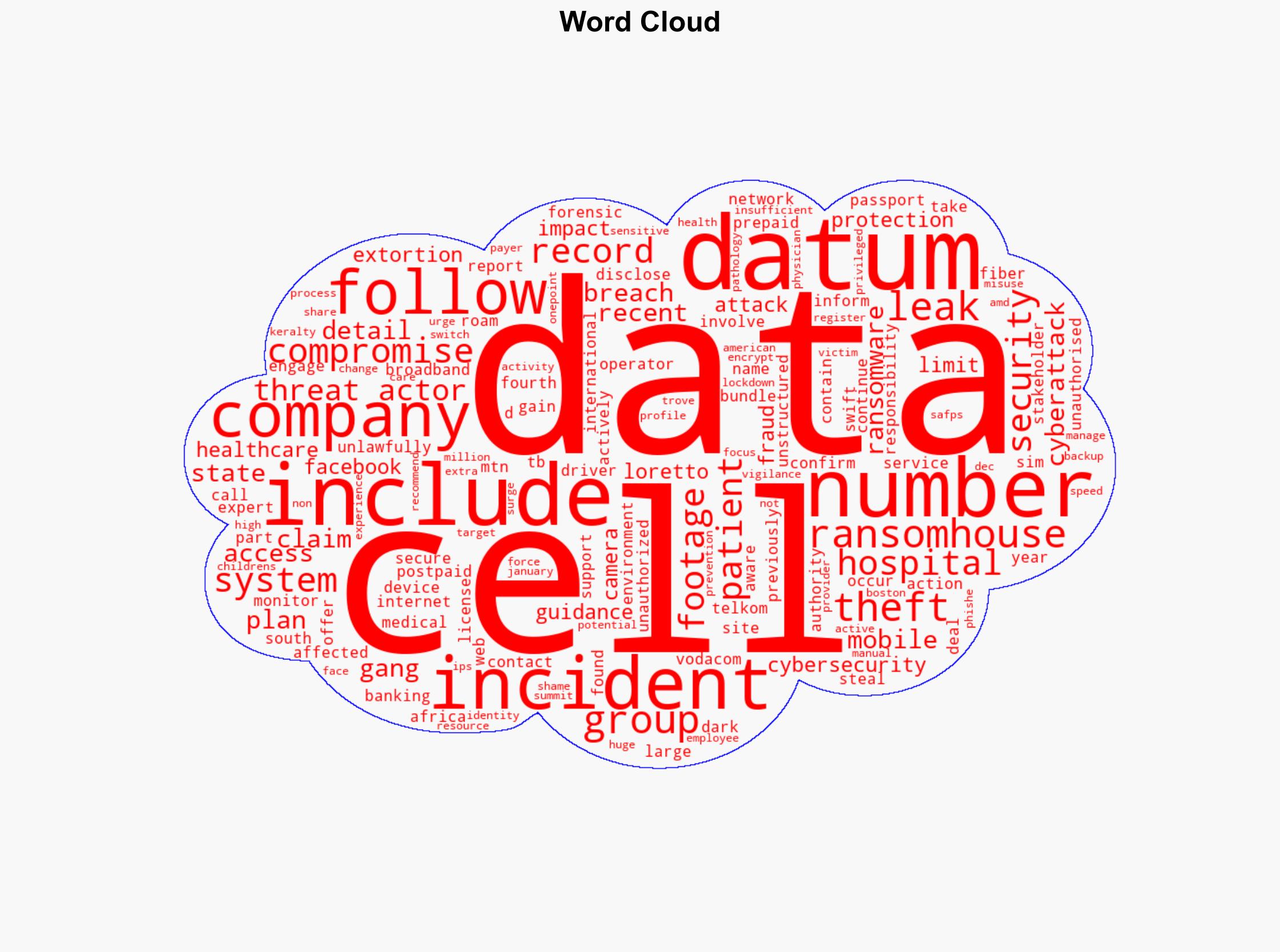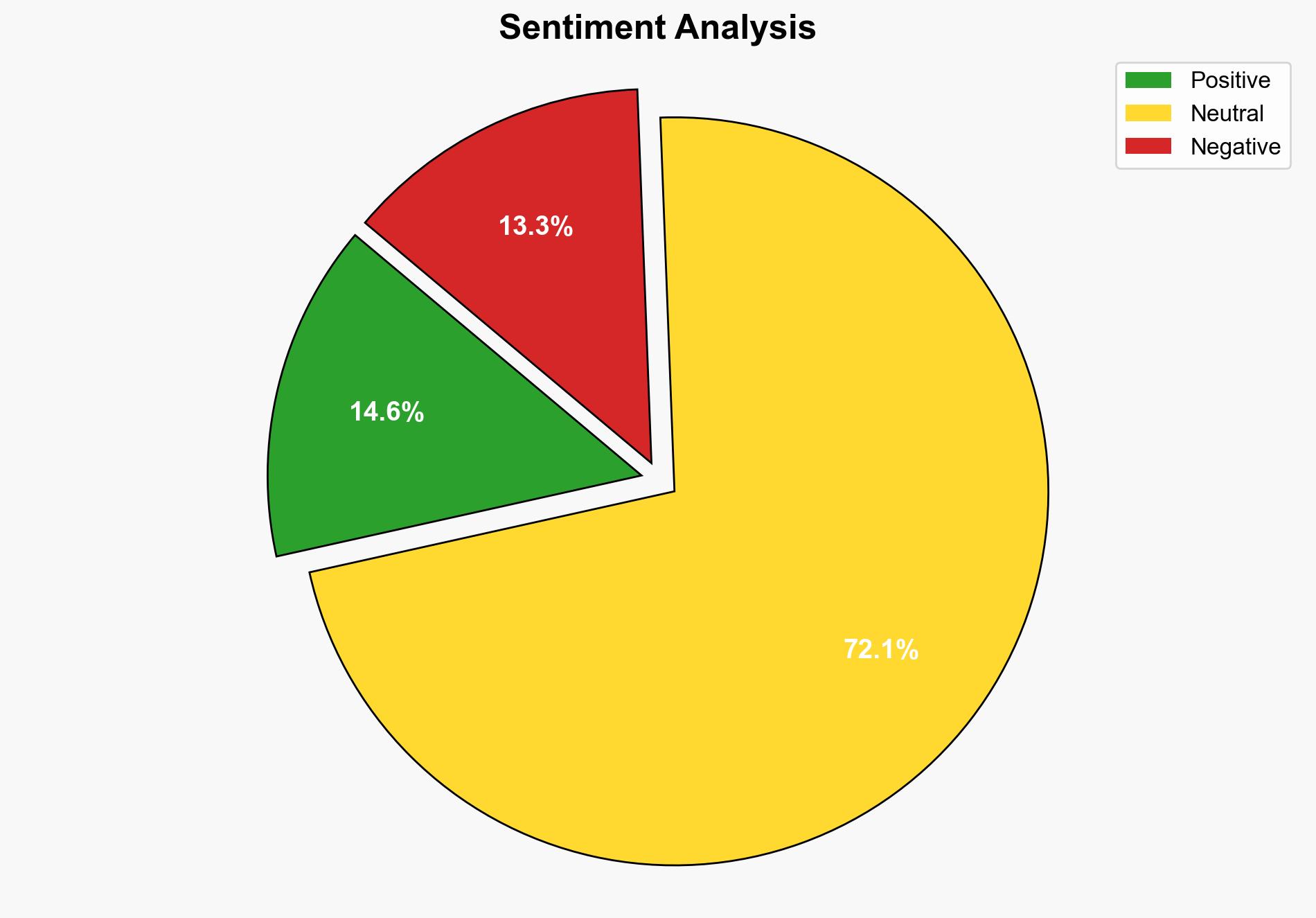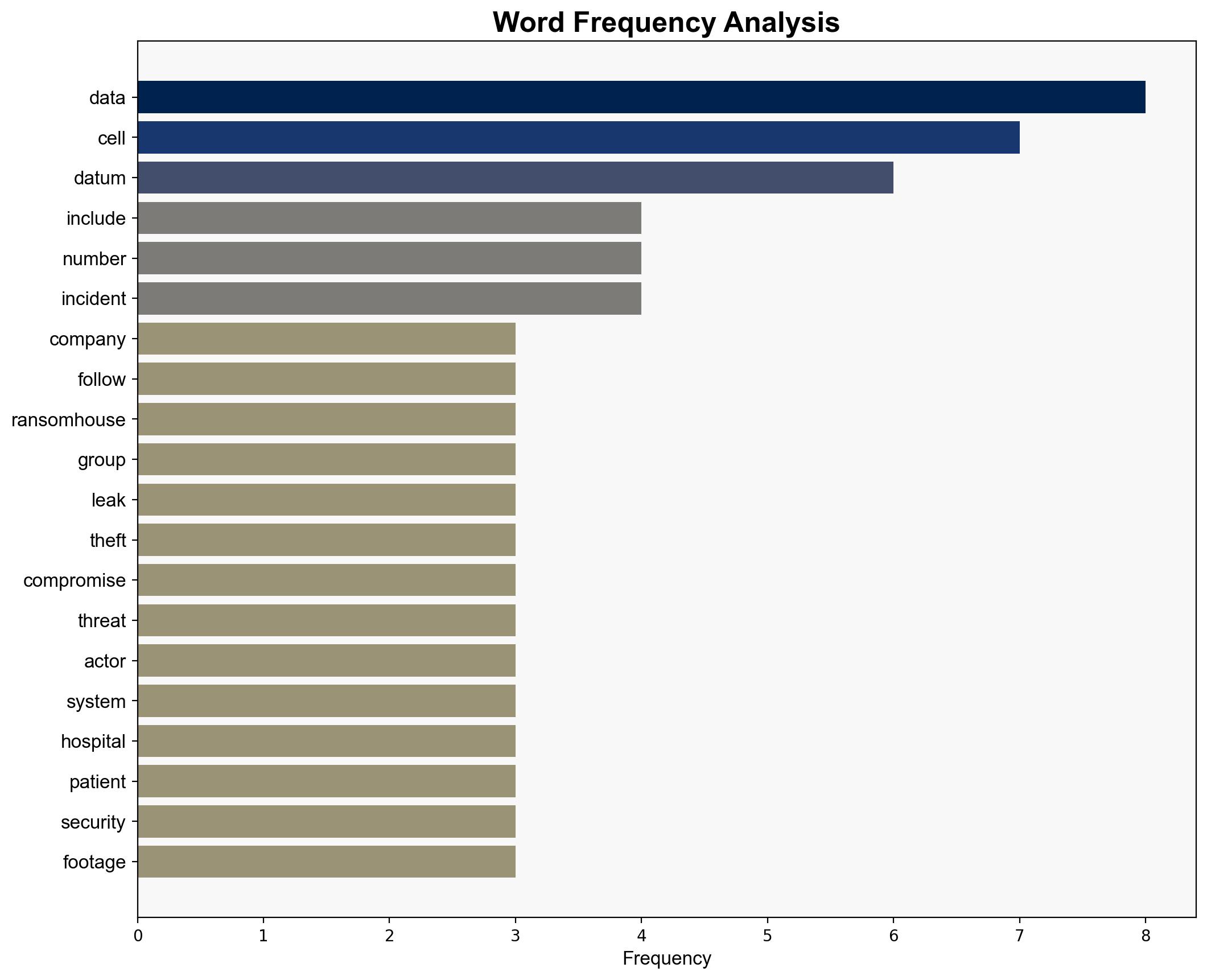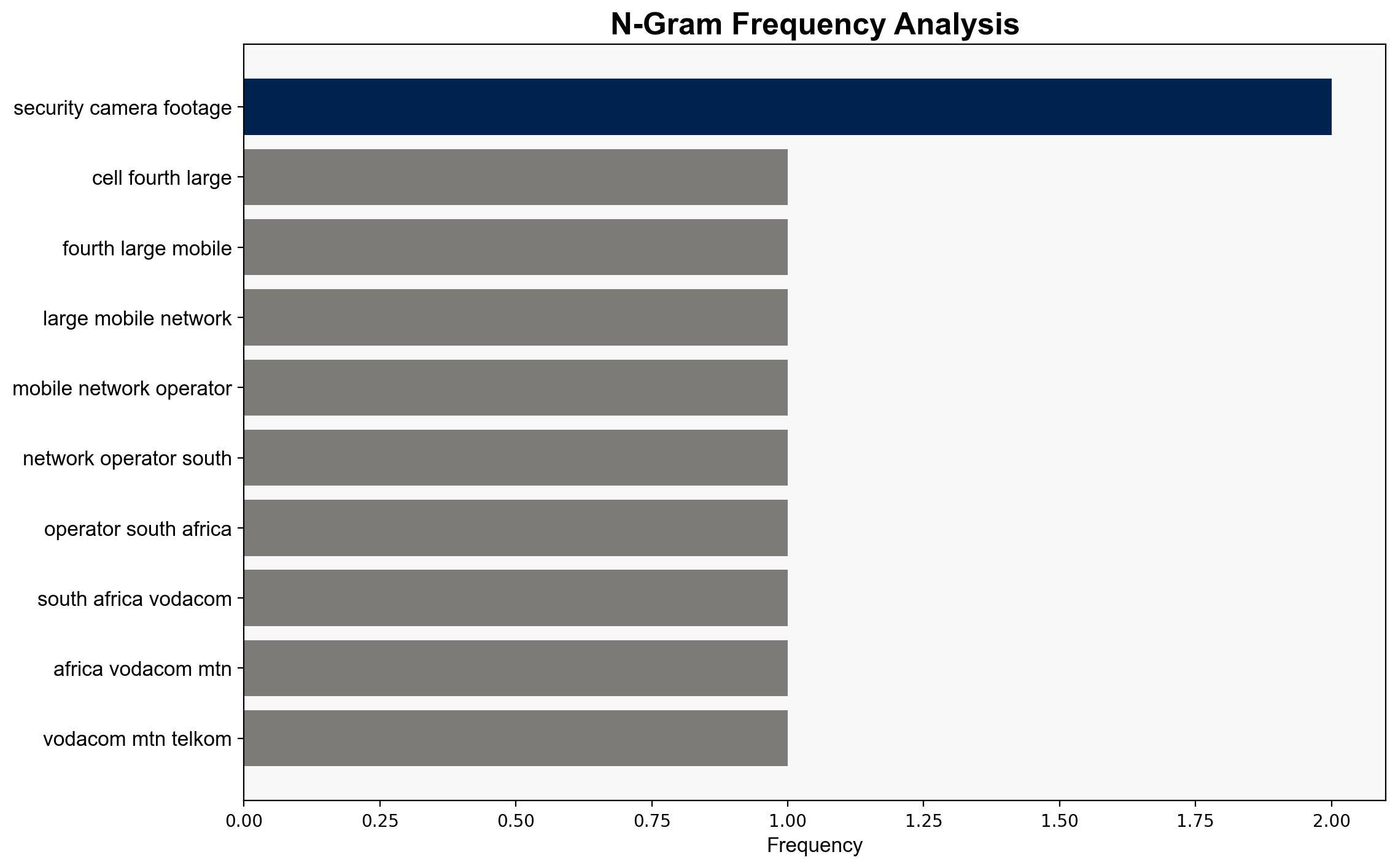South African telecom provider Cell C disclosed a data breach following a cyberattack – Securityaffairs.com
Published on: 2025-04-14
Intelligence Report: South African telecom provider Cell C disclosed a data breach following a cyberattack – Securityaffairs.com
1. BLUF (Bottom Line Up Front)
Cell C, a major telecom provider in South Africa, experienced a significant data breach due to a cyberattack by the RansomHouse group. The breach resulted in the theft of 2 TB of sensitive customer data, including personal and financial information. Immediate actions have been taken by Cell C to mitigate the impact, but the incident highlights vulnerabilities in data protection and the growing threat of cyber extortion groups. Stakeholders are advised to enhance cybersecurity measures and remain vigilant against potential data misuse.
2. Detailed Analysis
The following structured analytic techniques have been applied for this analysis:
General Analysis
The cyberattack on Cell C was executed by RansomHouse, a group known for data theft rather than encryption. This method allows for quicker exploitation of stolen data. The breach exposed a wide array of sensitive information, increasing the risk of identity theft and fraud for affected individuals. Cell C’s response included engaging cybersecurity experts and notifying authorities, demonstrating a proactive approach to crisis management. However, the incident underscores the need for robust data protection strategies and the importance of regular security audits.
3. Implications and Strategic Risks
The breach poses several strategic risks, including:
- Increased risk of identity theft and financial fraud for affected individuals.
- Potential regulatory scrutiny and financial penalties for Cell C.
- Reputational damage to Cell C, impacting customer trust and market position.
- Broader implications for the telecom sector, highlighting vulnerabilities to cyberattacks.
- Potential national security concerns if sensitive data is exploited by malicious actors.
4. Recommendations and Outlook
Recommendations:
- Enhance cybersecurity infrastructure with advanced threat detection and response capabilities.
- Conduct regular security audits and vulnerability assessments to identify and address weaknesses.
- Implement comprehensive data encryption and backup solutions to protect sensitive information.
- Increase awareness and training for employees on cybersecurity best practices.
- Engage with regulatory bodies to ensure compliance with data protection standards.
Outlook:
Best-case scenario: Cell C successfully mitigates the breach’s impact, restoring customer trust and enhancing its cybersecurity posture.
Worst-case scenario: Continued exploitation of stolen data leads to widespread fraud, regulatory penalties, and significant reputational damage.
Most likely scenario: Cell C manages to contain the breach’s immediate effects but faces ongoing challenges in rebuilding trust and ensuring long-term data security.
5. Key Individuals and Entities
The report mentions significant individuals and organizations but does not provide any roles or affiliations. Key entities include Cell C and RansomHouse. The analysis also references other victims of RansomHouse, such as AMD and Keralty, and highlights the broader trend of ransomware attacks on healthcare providers in the United States.





